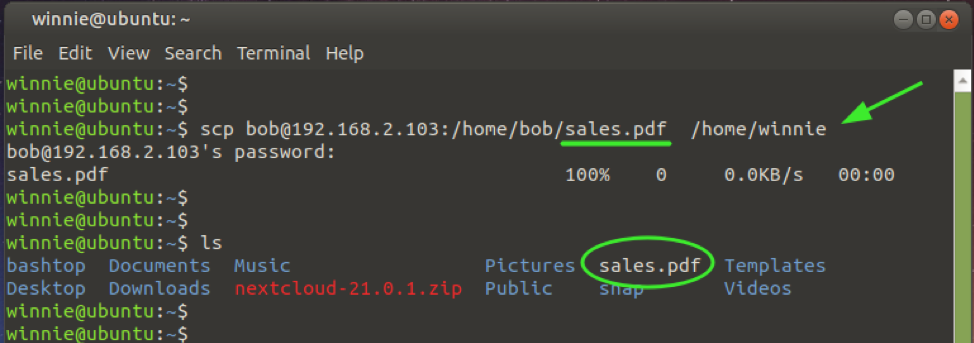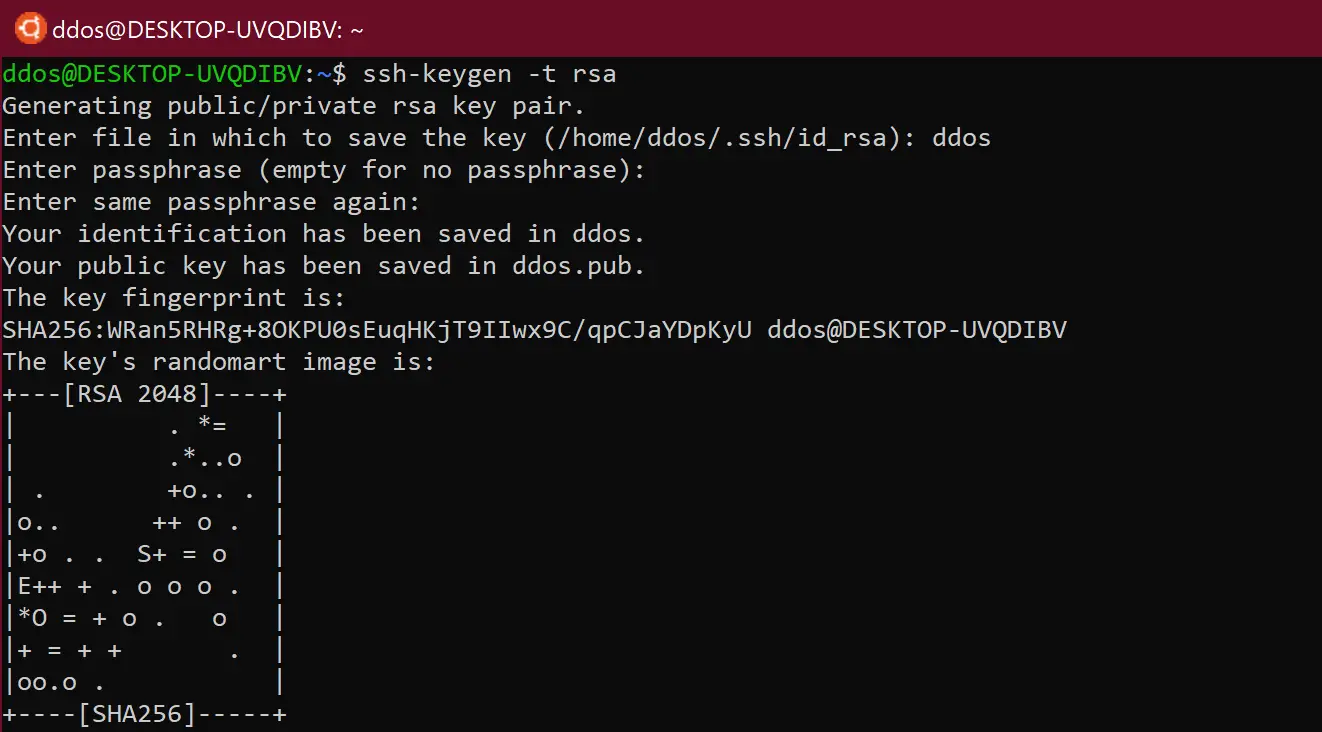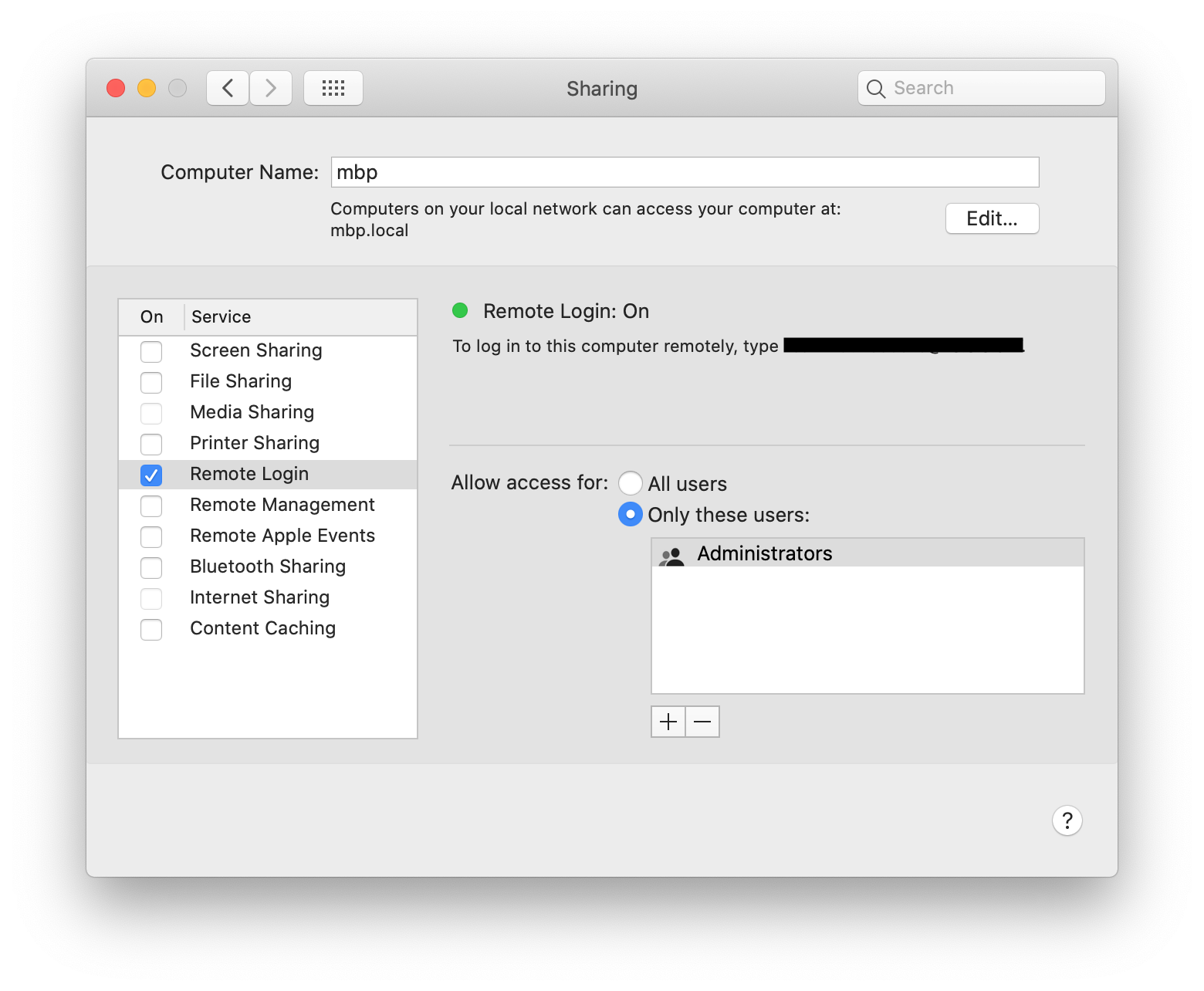

- #SSH COPY FILE FROM LOCAL TO REMOTE HOW TO#
- #SSH COPY FILE FROM LOCAL TO REMOTE UPGRADE#
- #SSH COPY FILE FROM LOCAL TO REMOTE PASSWORD#
SFTP or secure file transfer protocol is an upgrade from the traditional FTP (file transfer protocol). In this example, we have used the root user, but please make sure that your user has the write permission on the remote server. The directory contains one file netflix_, which we will transfer to the remote machine using the SFTP command. Exit the remote machine and hop back to your local machine and list the files and subdirectories in the current directory: ~]# exit If you have provisioned a new server, there will be no files in the root directory. To ensure that no files exist on your remote server, check your current directory and list the content of the directory: ~]# pwd Last login: Fri Feb 26 14:28:52 2021 from 180.150.39.150Īlternatively, you can generate SSH keys (public and private key pair) for authentication and log into the remote server using that.
#SSH COPY FILE FROM LOCAL TO REMOTE PASSWORD#
If you don’t have a remote system, quickly provision a remote server on Windows or Linux and log in using your root (user name) and password for authentication: ssh 's password: For this example, you would need a local and a remote system in place.

SSH creates a secure connection between two systems. See Also: (Live Webinar) Meet ServerMania: Transform Your Server Hosting Experience In the examples, we will use a sample file netflix_ hosted on our local machine, and we will securely transfer it using SFTP. The command line provides other alternative file transfer capabilities such as SCP, which also uses the SSH (secure shell) under the hood.


#SSH COPY FILE FROM LOCAL TO REMOTE HOW TO#
Get commands to copy the files.In this article, we will show you how to securely transfer files between your local machine and a remote machine, using SFTP (Secure File Transfer Protocol), also known as the SSH File Transfer Protocol. You can also use ssh tunnels for running Screen Sharing as well You could also consider using MacFUSE and use an sshfs file system, so you can use the Finder but be transferring your files over an ssh connection.Īs MrHoffman has mentioned, you can create an ssh tunnel over which you can mount the remote system's volumes But if you are going to try and keep some files or directories in sync, then rsync is an ideal tool for this. You can also use the 'rsync' command, however, it is a bit more difficult to setup. Scp -p /path/to/local/file -r -p /path/to/local/director -r -p /path/to/local/Application.app scp Using scp (a very handy, and easily scriptable command: I don't use that too much so don't remember how it plays with quotes on filenames with spaces or whether you just have to "escape" the white spaces Lcd to navigate to the desired remote and local directories and then use (the trailing period here means the current local directory) But in the remote filename specification, you have to enclose the whole remote piece in double quotes AND escape the white spaces, like so: You can either enclose the whole local piece in quotes or "escape" the white spaces with a preceding backslash on the local end. Things get a little trickier if the filepath or filename have spaces in them. Similar with remote filepath, if the remote source file or target destination is at $HOME, no need for it. Local filepath is optional, if you're already in that directory, no need for it. If you want to change the name at the receiver, just append the target filename after the trailing slash. These two forms will retain the same filename at the receiver. Scp filepath/filename push a file to the remote machine, or If you like "old school" command line, then, (do a find on Unassigned - there's lots of them) It just can't belong to another service that is currently in use so I always choose a number that is "Unassigned" from You can use pretty much any number you like in place of theĥ0548 they just gotta match in both places. It will mount as an external volume on your desktop and you can drag and drop. Ssh -L50548:localhost:548 you have a user prompt from your remote machine displayed, then switch to Finder and ⌘k toĪfp://localhost:50548. On the local machine, launch Terminal.app and type You could have AFP drag and drop capability tunneled through ssh.


 0 kommentar(er)
0 kommentar(er)
